Can you walk on Polyiso Insulation? (flat roof)
shw001
10 years ago
Featured Answer
Sort by:Oldest
Comments (12)
worthy
10 years agosnoonyb
10 years agoRelated Discussions
attic roof fan and insulation for flat-roofed rowhouse
Comments (15)Thanks guys. Let me see if I can provide a clearer picture of what I'm working with. The house is over 100 years old--a brick row house in the center of a block. Most walls and all the ceilings on the third floor are plaster, with lots of lumps and bumps and a few small cracks, but mostly solid. There are no ceiling moldings. To call what is above this floor an attic is a an exaggeration. It is a space that ranges from about 3 foot tall at the front of the house to about half that at the back of the house (roughly 40-feet on that floor...first and second floors have a bigger footprint and do not need insulating between living space and roof.) There is a central air (newish high-velocity, narrow tube) system that snakes around the "attic". The blower is installed at the one access point there had been. This system serves ONLY the third floor and has two outlets in each of three small bedrooms and one in the tiny bathroom. The system serving the first and second floors is in a second floor closet. The insulation guys tell me that they can blow insulation in but will need to cut at least one new mansized hole in the ceiling to get in--possibly two, one toward either end. There are no recessed lights on the floor, and only three overhead lights at all. All other lights are wall brackets, wired from the floor up, rather than from the ceiling down. Of the three overheads..one was put in new by me, so isn't K&T. One the previous owner says was moved by them, so isn't K&T (But may connect in to K&T at the meeting of wall and ceiling. And one is the bathroom overhead, which can easily be checked. My electrician replaced the fixture there, so he should know what's above it. The roof is asphalt and fairly new (say 5 years old?) so, I'm not inclined to want to replace it anytime soon. I've gotten a quote for $950 to cut an access whole and blow in insulation. I'd have to pay someone else separately to fix up the access panel afterwards, probably adding another few hundred. Most neighbors don't even try to do much of anything with ventilation in their "attics", as they are all scared witless of cutting holes in their roofs. But I have found info on the Brooklyn Brownstoner blog about successful attic and whole house fan installations and one neighbor loves the whole house fan he has which sits in a sort of plastic cove on the roof. Unfortunately, he bought it with the house and has no idea who installed it. I don't intend to move in the near future, or even the more distant future. But I would like to make the third floor more habitable in the summer, especially since at some point in the next two years or so, I'd like to turn it into a separate apartment and rent it. Honestly, I seem to be finding such conflicting information and I'm so dubious about how knowledgeable folks you hire to do this stuff are about old and "out of the norm" houses that I really, really, do appreciate any and all help I can get here on this forum. Thanks,...See MoreRoof coating: silicone, urethane (aliphatic) or rubber formy flat roof
Comments (3)What did you end up doing? I'm learning now. We have an old tar and gravel flat roof. We've had a few leaks patched since we purchased a few years ago...we'll be redoing the whole thing in the next year. Same weather in MN. Super hot and super cold. I hope everything went well!...See MoreFlat roof pitch options
Comments (34)Three on the tree, you are correct technically you can ballast up to 2/12 but you will not be able to find anyone or any discussion of anyone ever doing it on a 1/12 or greater pitched roof on a custom home. The gravel would end up in our gutters after a year or two. The heavier the gravel the more risk to the roof for tears as it eventually moves. Not to mention at some point there will be a roof leak and moving that gravel is expensive and can make finding leaks very difficult. Little mansion i updated my settings but you have to update yours to allow me to send you a message. It doesn't give me an option to email you! Being that you have completed your build in the same area, i would love to be able to compare notes as we go through this… if you are open to that. Thank you! that. Thank...See MoreRubber Roof Flat Roofing Area
Comments (24)I am just giving you information so you are armed with knowledge. How this proceeds after this is up to you. Obviously roofing is one of the most important building trades to get right, yet often is done wrong because contractors fail to follow easy-to-obtain manufacturer instructions. Show your roofer this thread and teach them. This roofing job is DIY beginner at best. There were only 4 main parts here to complete: 1.) rolls (proper base prep) 2.) flashing (at walls) 3.) penetrations 4.) edge. They did 3.5 parts out of 4 incorrectly. It appears to be a rural area, so maybe any actual roofers are hard to find, and this one is certainly not certified with GAF. - The product, if GAF, is Liberty SBS (rubber modified) white roll roofing: Lowe's GAF Liberty - It is a self-adhered product, and can be chosen to be installed over plywood. The cement roof sealant should never be used to 'putty' large areas and used as the primary transition for flashing and edge details - it will fail. Edge requires a metal drip edge. The Pipe penetrations should not have bitumen on the rubber boot (pipe detail: GAF Pipe detail). Flashings should extend under siding and Weather Resistant Barrier (housewrap) should extend over it. Here are the installation instructions including picture details: GAF Liberty SBS Installation Instructions - There are roofing granules that can be sprinkled over the lap cement that shows at seams and flashings/penetrations to blend them GAF Roofing Granules _______ GACO roof coatings are applied over old, weathered roofing materials to try and extend the life and appearance. Probably would use GACOFlex S42 Series. GACO Roof Coatings - you paid for a new roof, why do you have to pay to coat it because of their incapabilities - GAF provides a list of compatible coatings that can be used with their specific products which will be warrantied as a complete installation (whether installing a 3rd party coating like GACO will void any GAF warranty should be verified, although nothing about your poor installation can be warrantied). Here is their recommendations: GAF Roof Coatings for SBS Roll Roofing...See Morerenovator8
10 years agormtdoug
10 years agoshw001
10 years agoworthy
10 years agormtdoug
10 years agoshw001
10 years agoworthy
10 years agoworthy
10 years agoshw001
10 years ago
Related Stories
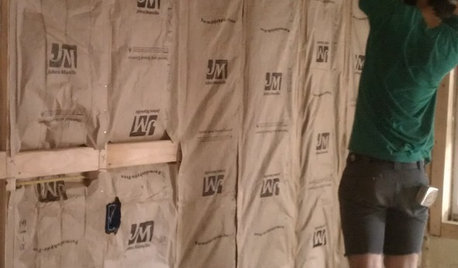
REMODELING GUIDESCool Your House (and Costs) With the Right Insulation
Insulation offers one of the best paybacks on your investment in your house. Here are some types to discuss with your contractor
Full Story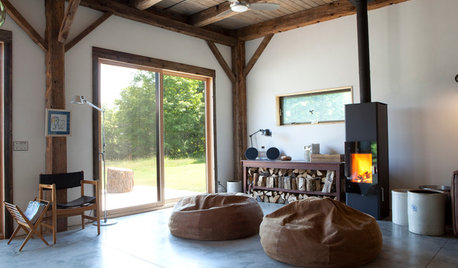
GREEN BUILDINGInsulation Basics: Heat, R-Value and the Building Envelope
Learn how heat moves through a home and the materials that can stop it, to make sure your insulation is as effective as you think
Full Story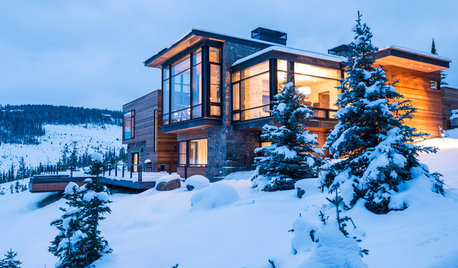
ARCHITECTUREHave Your Flat Roof and Your Snow Too
Laboring under the delusion that flat roofs are leaky, expensive and a pain to maintain? Find out the truth here
Full Story
DESIGN DICTIONARYFlat Roof
This roof is on the level about being best for climates with little rain and no snow
Full Story
HOME TECHWhat Chipotle and Radiohead Can Teach Us About Sound Quality at Home
Contemporary designs filled with glass and concrete can be hostile environments for great sound quality. Here's how to fix that
Full Story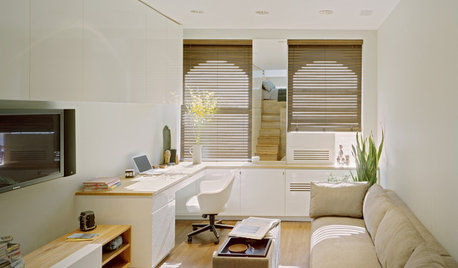
SMALL HOMESCan You Live a Full Life in 220 Square Feet?
Adjusting mind-sets along with furniture may be the key to happiness for tiny-home dwellers
Full Story
DREAM SPACESWe Can Dream: The Ultimate Lakeside Getaway
This 10-sided cabin keeps a low profile on an idyllic Lake Pend Oreille setting, even as its architecture stands on its own
Full Story
LIFEThe Polite House: How Can I Kindly Get Party Guests to Use Coasters?
Here’s how to handle the age-old entertaining conundrum to protect your furniture — and friendships
Full Story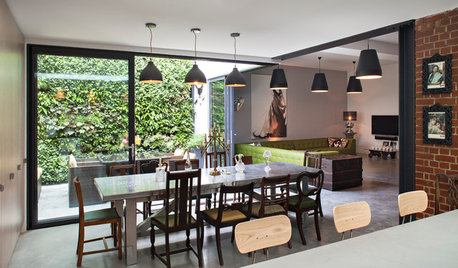
INDUSTRIAL STYLEHouzz Tour: Industrial Rococo Style in a London Courtyard Flat
Raw materials, a lush living wall and a creative approach to decor are highlights in a filmmaker and a restaurateur’s warehouse apartment
Full Story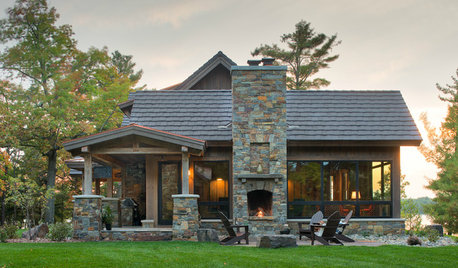
ROOFSWhat to Know Before Selecting Your Home’s Roofing Material
Understanding the various roofing options can help you make an informed choice
Full Story




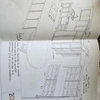
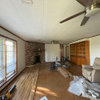
MokiDogTenSur